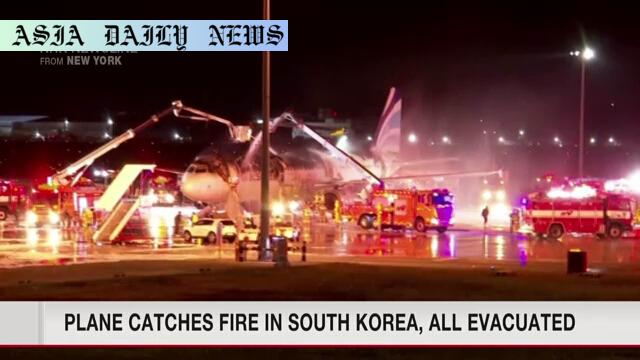Passenger plane fire: A flight at Gimhae International Airport in Busan caught fire, leading to injuries during evacuation efforts.

Passenger Plane Catches Fire at Gimhae International Airport
A passenger plane bound for Hong Kong caught fire at Gimhae International Airport in Busan, South Korea, on Tuesday evening around 10:30 p.m. local time. This alarming incident occurred when the aircraft was preparing for its flight, creating panic among passengers and aircrew.
Evacuation Efforts: Timely yet Costly
Reports indicate that the 169 passengers and seven crew members aboard the flight were safely evacuated before the fire spread further. However, during the emergency evacuation, three passengers sustained injuries. Emergency response teams, including firefighters, worked swiftly to manage the situation and ensure the safety of everyone onboard.
Investigation Into the Cause
Authorities, including police and firefighters, have launched a thorough investigation to determine the cause of the fire. At this time, it remains unclear whether technical malfunctions, operational errors, or external factors played a role in the fire outbreak. The investigation aims to gather critical evidence and prevent similar incidents in the future.
Passenger Safety: Immediate Implications
While the evacuation procedures were efficient, the injuries sustained by three individuals underscore the inherent risks involved in such situations. Airlines and airport authorities may face scrutiny regarding the effectiveness of safety protocols and the speed of their emergency response teams. This incident will likely prompt airlines to reassess their safety measures, ensuring similar scenarios do not arise in the future.
The Larger Aviation Context
This incident highlights the critical need for stringent safety regulations in the aviation industry. South Korea has prided itself on an impressive record of aviation safety, but this episode serves as a sobering reminder that constant vigilance is required. At a time when air traffic is projected to increase, incidents like this emphasize the importance of regular maintenance, advanced safety protocols, and immediate emergency responses.
Moving Forward
For passengers, this episode may lead to increased calls for transparency from airlines concerning aircraft maintenance and safety features. It also raises questions about how well-prepared passengers are for emergencies like this. Educational campaigns or enhanced guidelines for passenger safety could be an appropriate response to restore confidence in air travel in the wake of such incidents.
Commentary
The Swift Response to a Tragic Incident
The recent plane fire at Gimhae International Airport is a stark reminder of the unpredictable challenges faced in aviation. While it’s a relief to learn that all passengers and crew were safely evacuated, the injuries sustained by three passengers highlight the physical risks involved in high-stress emergency situations.
Investigating the Cause: Urgency and Transparency
The investigation into the cause of the fire is critical, not only to bring closure to those affected but also to improve safety measures for the future. Whether it’s a technical fault or human error, lessons must be extracted and acted upon promptly. Increased transparency in such investigations would go a long way in restoring passenger confidence.
Passenger Safety: A Shared Responsibility
This incident also raises important points about passenger preparedness. Evacuation drills, safety briefings, and adherence to protocol play a pivotal role in managing crises. Moving forward, airlines and aviation authorities should consider bolstering training for both staff and passengers to better navigate emergencies.
Focus on Continuous Improvement
As air travel becomes increasingly central to modern life, airlines cannot afford to be complacent. Regular audits, maintenance checks, and continued investment in safety are essential to ensuring that incidents like this remain rare. Additionally, fostering an environment of accountability within the aviation industry is vital for long-term improvements.


